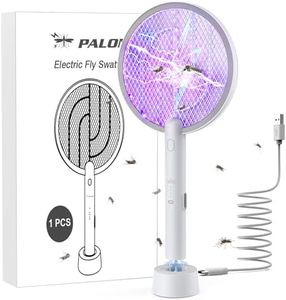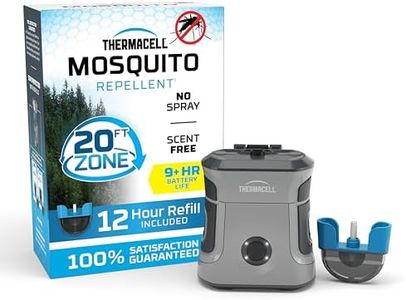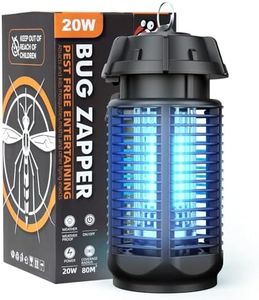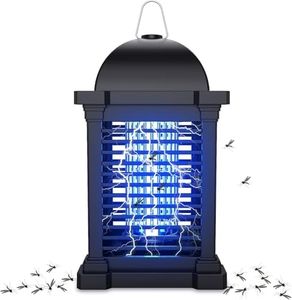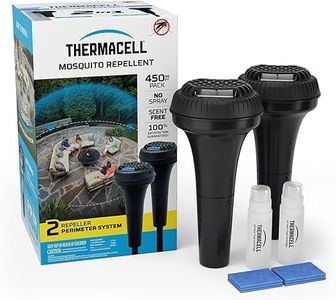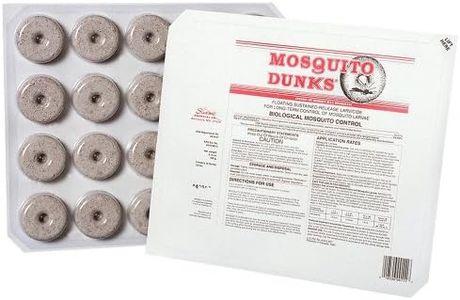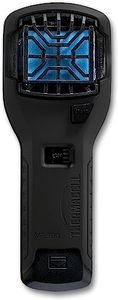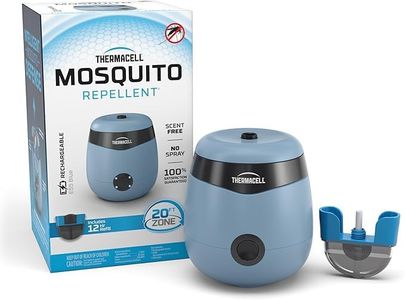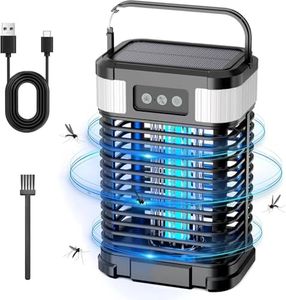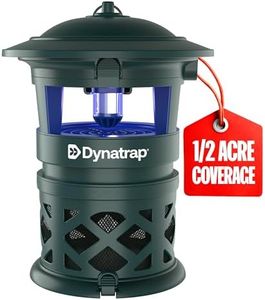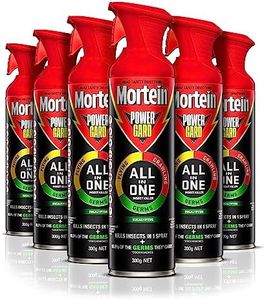We Use CookiesWe use cookies to enhance the security, performance,
functionality and for analytical and promotional activities. By continuing to browse this site you
are agreeing to our privacy policy
10 Best Mosquito Killers
From leading brands and best sellers available on the web.Buying Guide for the Best Mosquito Killers
When choosing a mosquito killer, it's important to consider how, where, and when you plan to use the device. Not all mosquito killers are the same—some are better for indoor use, while others can handle outdoor and larger spaces. Think about the factors that matter most for your comfort and safety, like the size of your area, the presence of kids or pets, and the level of maintenance you’re willing to do. Understanding the main features of mosquito killers will help you pick one that matches your daily needs and gives you peace from annoying bugs.Type of Mosquito KillerThis refers to the basic mechanism by which the product attracts and kills mosquitoes. The main types include electric zappers, UV light traps, CO2 traps, ultrasonic repellers, and chemical-based traps. Electric zappers use light to lure mosquitoes and then electrocute them, making them ideal for areas where you can tolerate the zapping sound. UV light traps are quieter and safer, attracting mosquitoes with soft light and pulling them in with fans. CO2 traps closely mimic human breath and are highly effective for larger spaces or heavy infestations but require more maintenance. Ultrasonic repellers emit high-frequency sounds, but scientific evidence on their effectiveness is limited. Chemical-based traps use attractants or insecticides and may not be safe for use around children and pets. To choose the right type, think about whether you need something quiet, kid-safe, effective for large areas, or easy to maintain.
Coverage AreaCoverage area indicates how much space your mosquito killer can effectively protect, often measured in square feet or meters. Small coverage units are best for personal rooms or small patios, typically under 300 square feet. Medium options handle bigger living areas or decks in the range of 300 to 700 square feet. Large coverage models can work for gardens, yards, or open outdoor spaces above 700 square feet. To pick the ideal coverage, measure the main area where you want mosquito control and match it to the product’s stated range. Using a device too small might leave you unprotected, while unnecessarily large ones can be wasteful and harder to handle.
Power SourceThe power source tells you how the mosquito killer operates—common options are plug-in, battery-operated, rechargeable, or solar-powered. Plug-in models are reliable for indoor or permanent spaces with available power outlets. Battery-operated or rechargeable devices are portable and great for travel, camping, or moving between rooms, but you'll need to monitor battery life and charging. Solar-powered models are eco-friendly and well-suited for outdoor use, but rely on sunlight and may not work well in cloudy conditions. Choose your power source based on whether the mosquito killer will be mostly stationary, portable, or exposed to outdoor elements.
Safety FeaturesSafety features are especially important if you have young children, pets, or plan to use the mosquito killer in busy areas. Look for protective grills or cages around electric grids to prevent accidental contact, and sealed designs to stop curious fingers or paws. Some chemical-based or attractant traps offer child-proof locks or spill-resistant containers. Fan-based models are typically safer than open electric grids. Your choice should be guided by who will be exposed to the device and whether there’s a risk of unsafe contact—always opt for features that protect your household.
Maintenance RequirementMaintenance refers to the effort needed to keep the mosquito killer working well—this might mean cleaning trays, replacing bulbs or attractants, and removing dead insects. Simpler models may need only an occasional emptying or wipe down, while advanced CO2 or attractant traps could require monthly part replacements or more regular servicing. If you prefer a hands-off solution, look for models that advertise easy-clean features or self-cleaning. Consider how much ongoing effort you’re comfortable with based on your lifestyle and the time you can dedicate to maintaining the device.
Noise LevelNoise level measures how much sound the mosquito killer produces during operation. Electric zappers can emit a noticeable zap when killing insects, which might be distracting in a quiet bedroom or during outdoor dinners. Fan-based traps and UV light models are usually quiet, making them better for areas where silence is valued. When choosing a mosquito killer, match its noise level to your intended environment—quiet spaces need low-noise devices, while noise-resistant zones (like patios or garages) can handle louder units.
